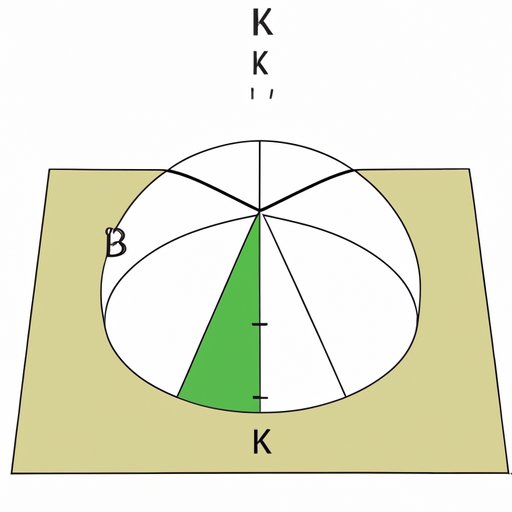Introduction
Finding the circumference of a circle is an important concept in math that has practical applications in everyday life. Whether you’re trying to calculate the distance around a circular object or working on math homework, knowing how to find the circumference of a circle is essential. In this article, we’ll explore the formula for finding the circumference of a circle, provide real-world examples to render practical understanding, and include interactive tools and diagrams to help you visualize the concept.
Understanding the Formula
The circumference of a circle is the distance around its outer edge. The formula for finding the circumference of a circle is:
C = 2πr or C = πd
To use the formula, one must first understand the meaning of the variables. “C” stands for circumference, “π” is pi (3.14), “r” is the radius, and “d” is the diameter. If you know the radius of the circle, you can use the first formula. If you know the diameter, you can use the second formula.
Let’s break down the formula using the first example. To find the circumference using radius, multiply 2 by pi (3.14), then multiply that by the radius. Here’s the formula written in simpler terms:
C = 2 x 3.14 x r
For example, if the radius of a circle is 5 cm, the circumference would be:
C = 2 x 3.14 x 5 = 31.4 cm
Using the second formula (C = πd) is equally simple. To find the circumference using the diameter, simply multiply pi (3.14) by the diameter. Here’s how that formula looks:
C = π x d
For example, if the diameter of a circle is 12 cm, the circumference would be:
C = 3.14 x 12 = 37.68 cm
Real-World Examples
Understanding the concept of the circumference of a circle can be very useful in everyday life. Let’s use real-world examples to help demonstrate:
Example 1: A wheel’s circumference
If you want to measure the distance a wheel will travel in one full rotation, you must measure the circumference of the wheel. Let’s say you want to know how far a bicycle will travel in one full rotation of the wheel. If the wheel has a diameter of 66 cm, the circumference would be:
C = π x 66 = 207.35 cm
So, the bicycle will travel 207.35 cm in one full rotation of the wheel.
Example 2: A tub’s circumference
If you want to know how much water can fit into a tub, you need to know its circumference. Let’s say you have a tub with a diameter of 1.5 m. The circumference of the tub would be:
C = π x 1.5 = 4.71 m
This information can then be used to calculate the volume of the tub.
Visual Aids
Visual aids can help readers better understand the formula and how it works. Here’s a step-by-step breakdown of the formula using visuals:

Interactive Tools
Interactive tools or calculators can help readers understand the formula better. Here’s an example of an interactive tool:

With this tool, you can input the radius or diameter of a circle and immediately see the corresponding circumference.
Common Misconceptions
Some of the common misconceptions about finding the circumference of a circle are:
- The formula only works for perfect circles.
- The radius has to be a whole number.
- The diameter has to be an even number.
To avoid these common mistakes, remember that the formula works for all circles, the radius can be a decimal or fraction, and the diameter can be an odd number.
Conclusion
Understanding the formula for finding the circumference of a circle is an essential concept in math with practical applications in everyday life. By mastering this formula, you can measure the distance around any circular object, calculate areas and volumes of circles, and solve math problems with ease. Remember, the formula is straightforward: C = 2πr or C = πd.
